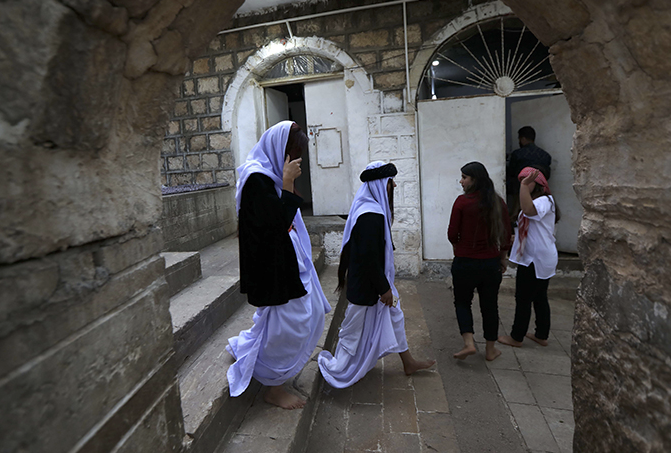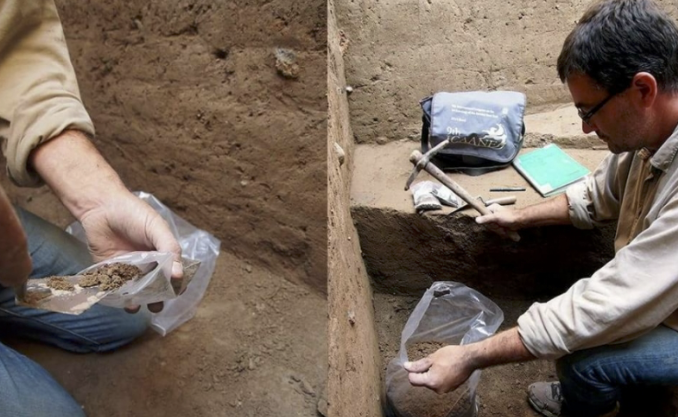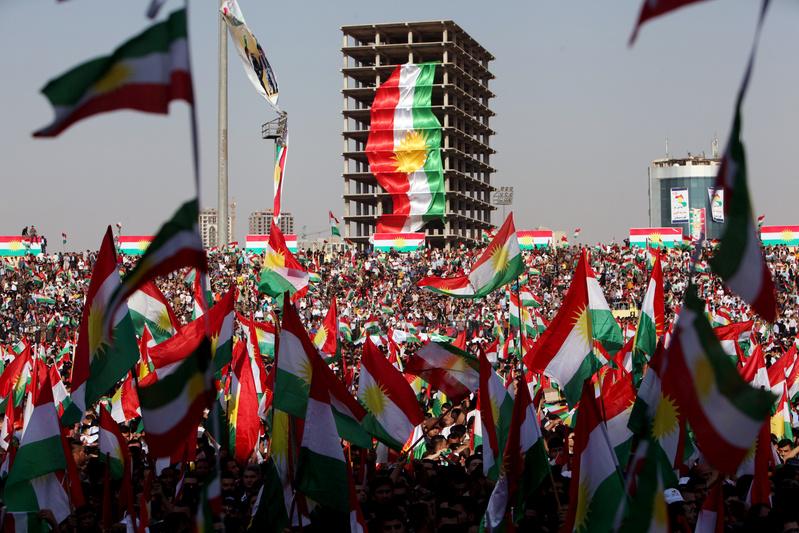Diaspora
The historical territory of the Yezidis is the northern of Iraq, the areas of AinSifni, Sinjar and Dohuk. In Turkey the Yezidis live in the southeast of the country, in the muds of Mardin, Midian, Siirt, Antab, Kars and Diyarbakir. In Syria, the Yezidis live in the regions of the northern and north-eastern part of the country - Kamishlu, Hasake and Aleppo.
Because of religious discrimination and repeated genocide by the Muslim majority during the last 14 centuries, Yezidis from Iraq, Turkey and Syria have fled to Christian countries since the XVIII century.
Yezidis families and even tribal groups have fled to the Russian Transcaucasus (Armenia and Georgia) during the Russo-Persian and Russo-Turkish wars of the 18th-19th centuries. They were residents of those Ottoman territories, which, according to the terms of Gulistan (1813) and Turkmanchay (1828), entered the Russian Empire.
The mass emigration of the Yezidis from Turkey, Iraq and Syria to Europe began in the 70’s and 80’s of the 20th century.
According to the last census of January 12, 1989, there were 152,717 Kurds living in the USSR. According to Kurdish sources, in the countries of the former USSR there were about 1 million Kurds, mainly in Azerbaijan [more than 500,000], Armenia [about 150,000, mostly Yezidis], Georgia [about 90,000 mostly Yezidis] and also, in Turkmenistan, Kazakhstan and Kyrgyzstan.
Yezidis lived in smaller numbers in the Transcaucasus area and in present time mainly:
In Armenia - in the regions of Aragats, Gegharkunik, Armavir, Ararat, Kotayk, Shirak and Lori. Most of the Yezidis settlements are located either in high mountain regions or in the Ararat valley. In the capital of Armenia theYezidis live in the Avan area.
In Georgia - mostly inTbilisi, Rustavi, Telavi and Batumi.
In Russia, during the USSR, the Yezidis were few. They were civil servants, students, graduates or result of mixed marriages. In the 80s of the 20th century Yezidis mainly came from Armenia to Russia to work and very few people settled down.
The collapse of the USSR placed the Yezidis of the Soviet Union in an extremely difficult situation, perhaps the most difficult of all nations. At that time, a political anecdote appeared in Georgia: "The old Yezidi man, who worked as a janitor , sweeps the square and analyzes out loud after another nationalist rally in opposition to the Government House of Georgia: Well, well. Armenians will leave for Armenia, Azerbaijanis for Azerbaijan, and what about us? Where should we leave? "
The process of the sovereignization of the republics and the independence of "all from all" dramatically affected both the economic and political status of the entire population of the USSR. But to a greater extent these problems have been touched by the so-called national minorities, that is, not the titular population of the newly independent states. In a wave of national euphoria, the new authorities of the former Soviet republics began to infringe the rights of national minorities, and some of their representatives were persecuted and threatened with physical violence. It is noteworthy that this mainly came from nationalist-minded citizens and parties. To the credit of the Georgian and Armenian peoples, it should be noted that in the majority they did not approve of the new nationalist policy and continued their friendship with the Yezidis - their neighbors, colleagues, friends and acquaintances.
A surge of nationalism, and more economical difficulties in Armenia and Georgia in the 90's of the XX century, literally pushed the Yezidis out of these countries. Unexpected and unforeseen problems forced people to leave their habitable places and in search of a better life and grab for the first opportunity to go to any more prosperous countries.
Yezidis, who lived compactly, and often according to tribal origin in Armenia and Georgia, this time had to scatter in the white light in search of shelter and salvation.
The bulk flew to Russia, in search of where to settle down.
In Russia, the Yezidis live in Moscow, St. Petersburg, Yekaterinburg, Krasnoyarsk, Surgut, Irkutsk, Nizhny Novgorod, Rostov, Samara, Stavropol, Tver, Tula, Ryazan, Kaliningrad, Ulyanovsk, Yaroslavl regions and the Krasnodar Territory. The smaller part fled to Europe - Germany, France, Belgium, England and other countries.
Today, the Yezidi refugees from the East and Transcaucasia can be found in almost all corners of Russia, in many countries of Europe: Germany, Austria, France, Belgium, Denmark, Holland, Sweden, Switzerland, Norway, England; in the USA, Canada and even in Australia.
Approximately 700 thousand people live in the Diaspora according to the estimated non-governmental organizations, of which: in Armenia (more than 60 thousand people), in Georgia (more than 10 thousand people), in Russia (more than 200 thousand people), in Europe (more than 300 thousand). In the USA, Canada and other countries (more than 20 thousand people), in Syria (more than 50 thousand people), in Turkey (more than 30 thousand people).











